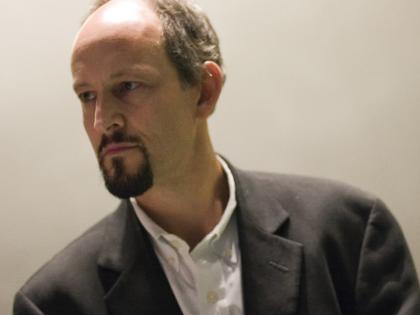Christopher Columbus can claim the world is round all he wants, but it doesn’t matterthe universe is flat. Paul L. Richards ’56, then a professor of physics at the University of California, Berkeley, and his colleagues confirmed the flatness (a precise density) of the universe in 2000, confirming Einstein’s cosmological constant and supporting the inflationary theory of the universe. Not yet satisfied, Richards is now determined to measure the density of the universe through each point in its 13-billion-year history.
Richards didn’t set out with such sweeping ambitions, or even as an astrophysicist. As a graduate student at Berkeley in 1957, he worked with Michael Tinkham (now at Harvard) on superconductivity, developing precise techniques for measuring far infrared radiation. Finishing his Ph.D. by 1959, he continued his studies at the University of Cambridge and Bell Laboratories before returning to Berkeley to teach. At a faculty function in the 1970s, Charles Townes (one of the inventors of the laser) suggested that Richards turn his detection techniques toward the measurement of radiation left over from the Big Bang, a study that Richards has pursued ever since.
 |
| Astrophysicist Paul L. Richards |
“When you look at the night sky with microwave eyes, you see it glowing very brightly,” Richards explains. Because light takes time to travel to Earth from its point of origin, looking at light from very far away is like looking through a time machine. The microwaves that he studies have been “cruising along undisturbed ever since the Big Bang.” Enormous balloons carry his telescopes up through the stratosphere, where Richards and colleagues peer into the distanceand the past.
Richards’s scrutiny of these most ancient of rays has revealed the precise density of the universe and the fact that the distribution of mass is approximately uniformfindings important to the unanswered question of how much total matter and energy exists in the universe. In work currently underway, Richards hopes to measure the rate of the universe’s expansion by measuring its density at di≠erent points in its history. To do this, he has retired from teaching undergraduate classes, after 40 years, and has set aside the balloons which carried his previous telescopes.
His new telescopes are about 10 times larger and a hundred times more sensitive, forcing them to stay earthbound. Because water vapor interferes with the microwaves in question, the telescopes must be constructed in the driest, highest places possible. At press time, Richards’s research team was taking its first observations with the new APEX S-Z (Atacama Pathfinder EXperiment Sunyads-Zildovich) telescope, which was constructed in Chile’s Atacama Desert. The name is “a mouthful, but there you have it,” says Richards; it honors the Soviet theoreticians whose models APEX will test. In 2007, the team will open an even more powerful telescope, built in Antarctica at a scientific outpost near the South Pole.
For Richards, these experiments are “the culmination of a long, long career” that began with growing up in a scientific family. “My father and his four brothers had Ph.D.s, and my mother’s four brothers all had Ph.D.s,” he explains. “They would ask, ‘Little boy, what are you going to get your Ph.D. in?’” Though he is uncertain whether he will travel to see the new telescopes that use “technology I helped invent and develop,” Richards calls them “my ideas coming to fruition.”
~John La Rue






